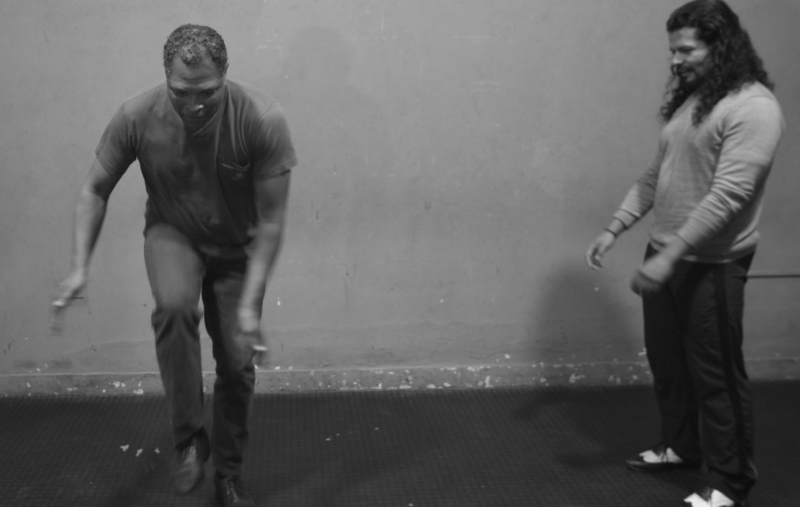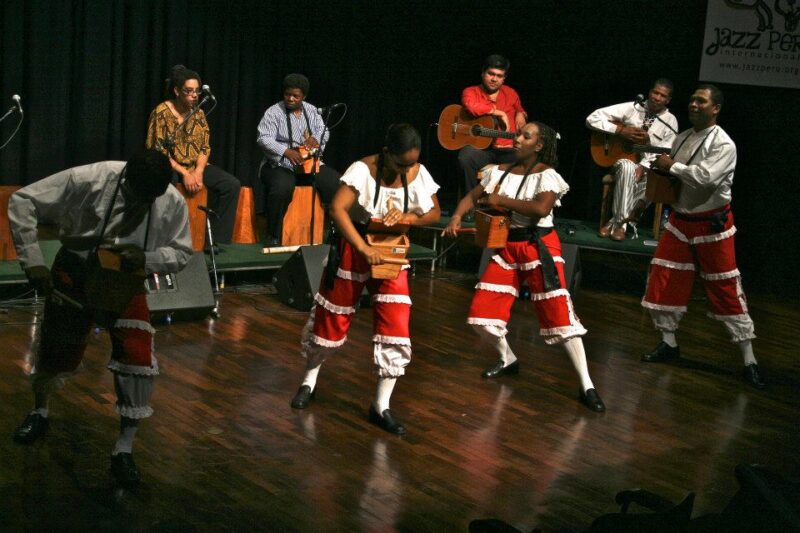All Projects Andes Contrapunto. The living footprints of Afro-Peruvian zapateo

Afro-Peruvian zapateo is a dance that developed in the Peruvian coast, specifically in the Departments of Lima and Ica. Zapateo dancers play with a variety of rhythms using different parts of the foot (heel, ball and sole) and use the palms of their hands to create percussive sounds by hitting them against the floor or their body.
Jumps, acrobatics and displays of skill are an essential part of the dance. Although zapateo as cultural heritage is fundamentally associated mostly with coastal Afro-Peruvians, it is currently being appropriated and practised by Andean communities.
Today, zapateo and Afro-Peruvian practices, in general, are becoming increasingly popular in other areas of Peru and around the world. This is due to the commitment of Afro-Peruvian artists and the employment of tools such as digital media and social networks.
Our transmedia project offers a bridge between dancers and investigators to integrate academic practice and dance into concrete outputs: the Contrapunto documentary series devoted to zapateo, the series of zapateo demonstrations Zapateando Con, the tutorial series on zapateo Repasa Tu Pasada, videos of contrapuntos or zapateo battles as well as interviews to the most representative zapateo dancers.
In addition, we strive for a careful curatorship of audiovisual material as well as a close interaction with zapateo dancers, allowing them to present their own work and understanding of their practice.


Photo: Nadia Calmet (personal archive)
Diverse and ever-changing
This project explores Afro-Peruvian zapateo as intangible cultural heritage, seeking to encompass its diversity of styles, tradition and innovation, its connection with Afro-Peruvian identity as well as its representation around the world.
One of the traditional zapateo practices takes place in the department of Ica, where squads of black male and female dancers – the hatajos de negritos and hatajos de payitas – dance zapateo to celebrate the birth of baby Jesus. The fervour and devotion is expressed through dancing around the main square, the entrance of the church, and inside people’s houses. In 2019, both hatajos were inscribed in the UNESCO list of Intangible Cultural Heritage.
Zapateo criollo, however, is a very different form of zapateo. It finds its greatest expression in the contrapunto (a sort of “zapateo battle”), where two or more dancers improvise executing several zapateo sequences or “pasadas” of varying complexity, accompanied by a guitar.
While in the hatajo, dancers are moved by the vigorous sound of the fiddle, the contrapunto dancers are driven by its challenge and playfulness.
Yet another form of zapateo is to be found in its deployment in dance theatre, often substituting spoken language to express dramatic action, and including techniques from other practices such as tap, urban dance and flamenco.
Zapateo is diverse and ever-changing. While young dancers are not afraid to take zapateo as a departure point for further exploration, more experienced masters are striving to keep their traditions alive.
Audiovisual documentation
The audiovisual material that this project produces and gathers will continue to be disseminated among zapateo practitioners, as well as public and private institutions, opening an awareness about zapateo as well as the different projects in which zapateo dancers and Afro-Peruvian artists are engaged in. In July 2021, we organized the zapateo contest ‘Repasa tu Pasada’, and were able to award gifts thanks to the sponsorship of Percusión Real and the Peruvian Ministry of Culture.
Percussion instruments were given as a prize to the best three zapateo videos and three master classes with teacher Rony Campos were awarded to the three most promising dancers. This project is committed to documenting and promoting the practice of zapateo, as well as having a positive impact in the quality of life of Afro-Peruvian artists.
Acknowledgements
We would like to thank the collaboration of:
